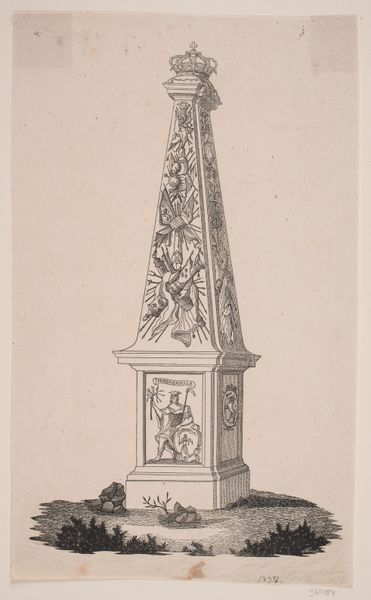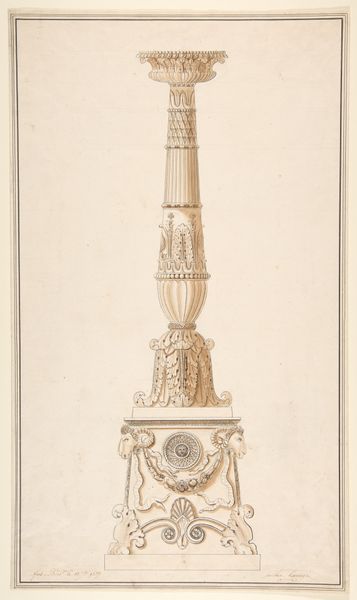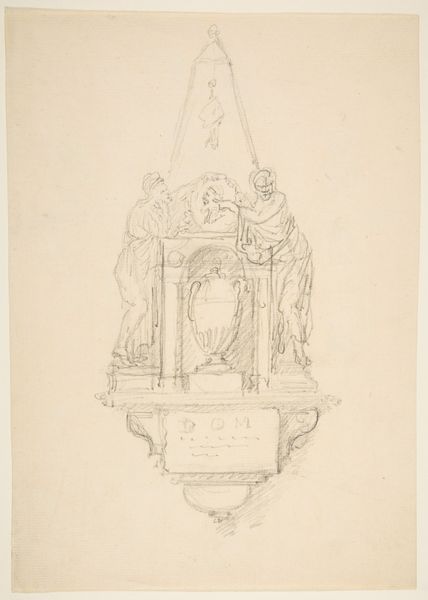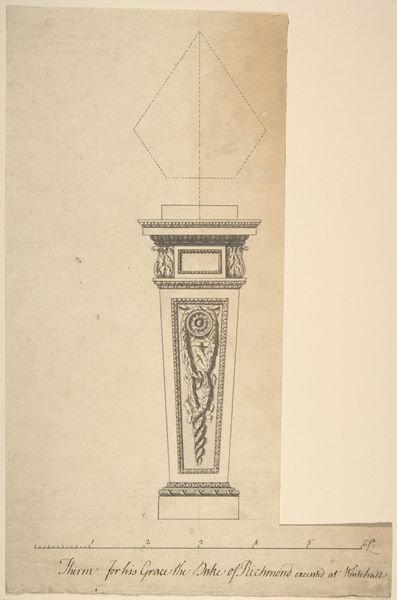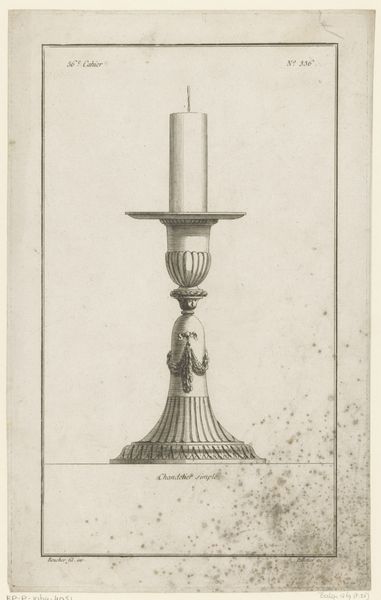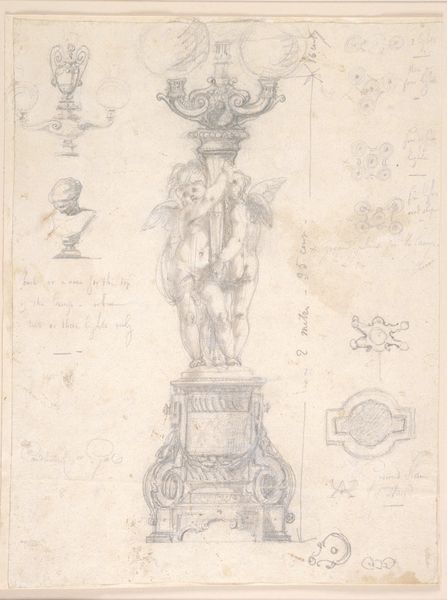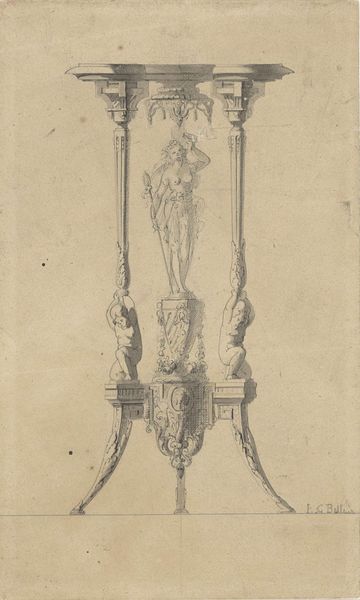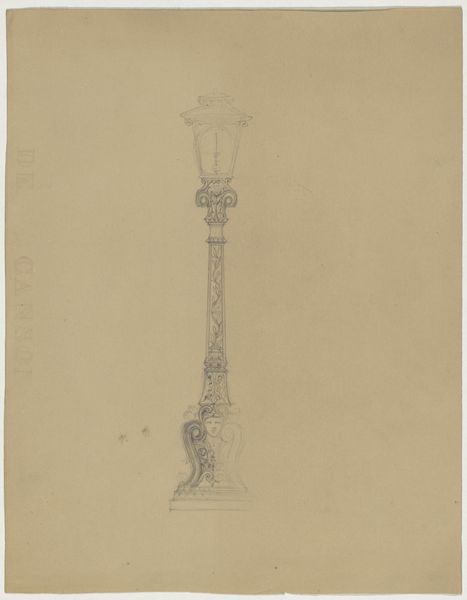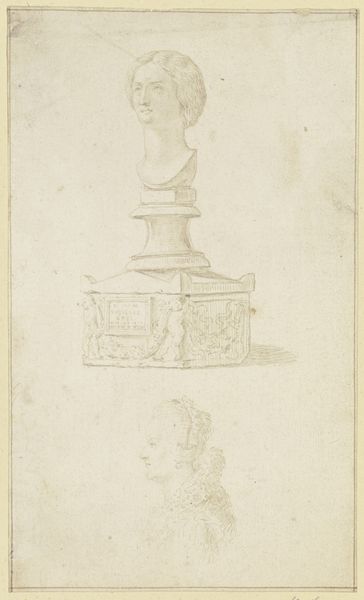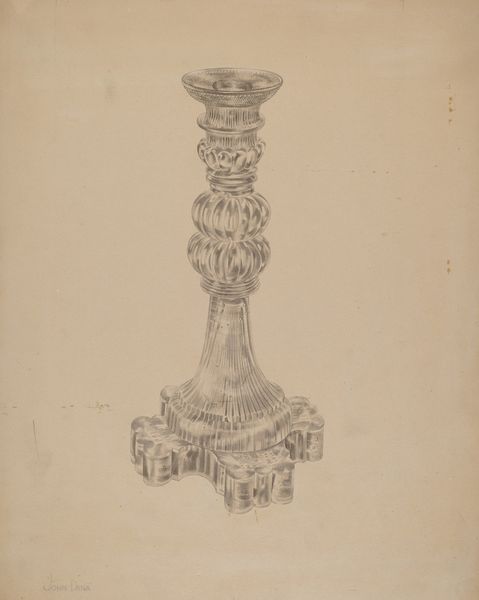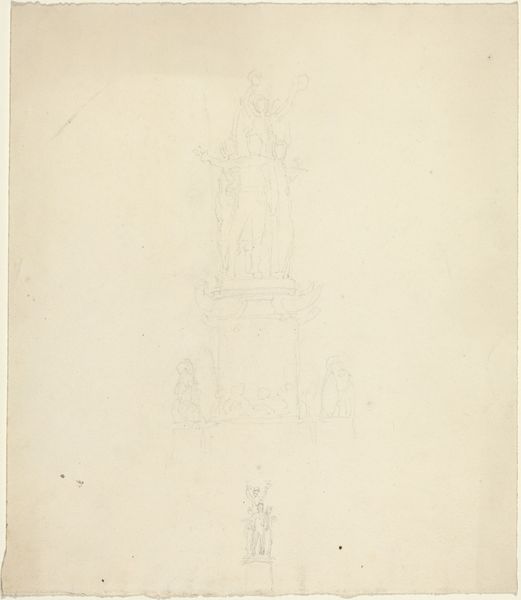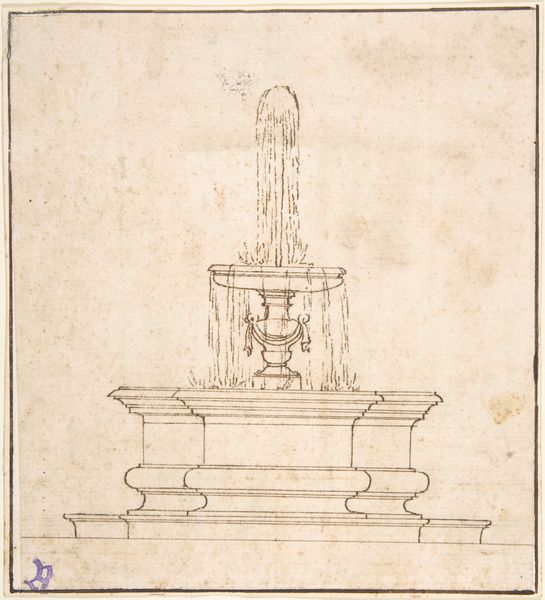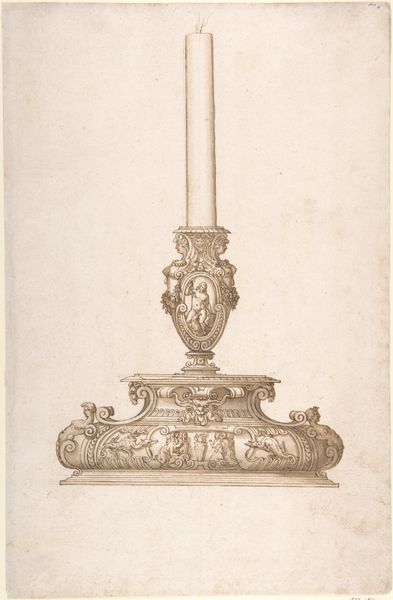
drawing, pencil
#
drawing
#
pencil sketch
#
geometric
#
pencil
Dimensions: overall: 51 x 26.8 cm (20 1/16 x 10 9/16 in.)
Copyright: National Gallery of Art: CC0 1.0
Curator: This drawing is entitled "Parade Fire Horn," and was created around 1937 by Elmer G. Anderson. Editor: It has an incredibly ghostly quality, doesn't it? It's predominantly pale—various tones of gray rendered with what appears to be delicate pencil work. The meticulous details of the horn and its ornamentation offer a sharp contrast against the flatness of the backdrop, which looks to be the paper used as a canvas. Curator: Indeed. Anderson's background is a bit obscure, but one can imagine him rendering objects for various civic entities. I suspect he was involved in either design proposals or documentation within the context of municipal commissions—maybe even a part of Roosevelt’s New Deal programs intended to promote both design and visual arts. Editor: And the horn itself becomes a vertical stage where both classical motifs and geometric patterns create visual harmony! Did fire departments adopt this streamlined, stylized form for practical use? Curator: That’s the puzzling question. In terms of functionality, I am a bit unsure about it. Typically, in fire parades of that era, the display of the fire equipment was a showcase of municipal pride, often revealing a town's commitment to public safety. This drawing then provides some cultural commentary of the design and visual aesthetics embraced by community stakeholders at that moment. Editor: Right, it looks less designed for sound and more designed to visually stun the public! Its tiered form allows for many perspectives. Look how those classical figures create depth and guide your eyes along its smooth geometry. How would one describe the experience of sounding it, if such a form ever made its way to parades? Curator: Likely ceremonial and declarative—though potentially signaling as much about civic design trends as the practical concerns of a town's fire safety. The politics of the horn is as pertinent as its purpose. Editor: This glimpse offers us insight on how functionality could take aesthetic forms for social events. I appreciate that about it. Curator: And for me, its place within a historical setting informs us more about American society's aesthetic ideals.
Comments
No comments
Be the first to comment and join the conversation on the ultimate creative platform.

